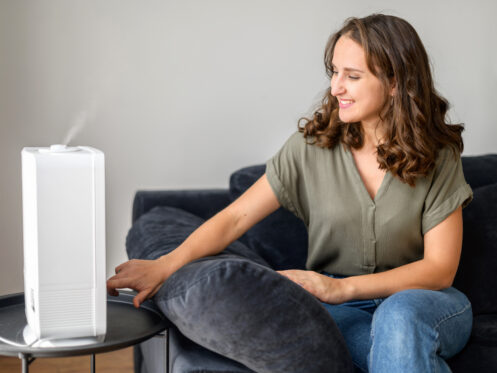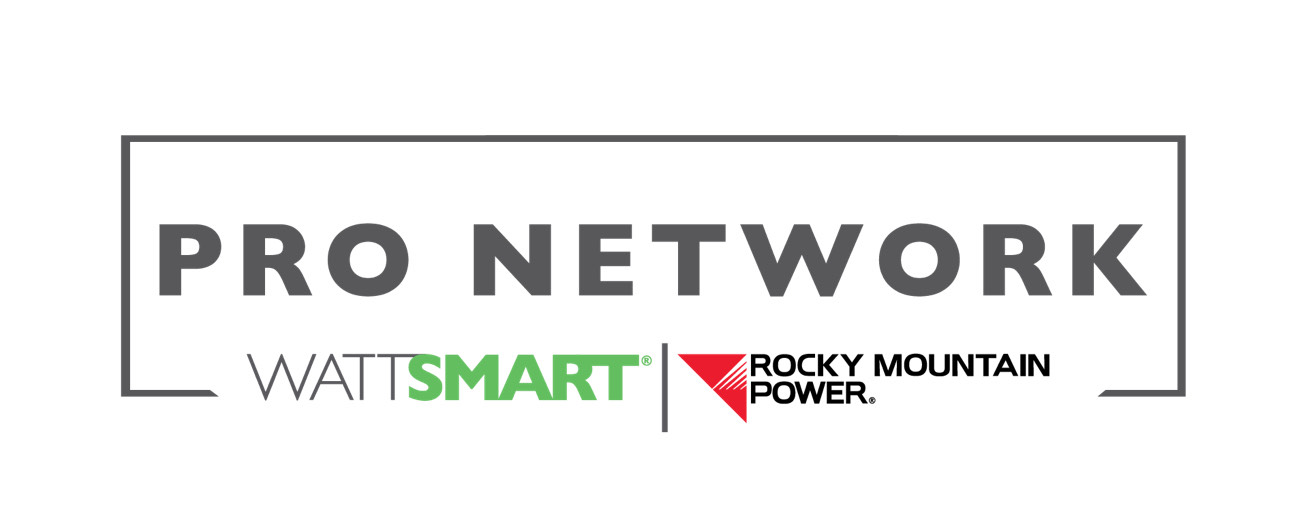Winter air tends to be dry simply because cold air can’t contain as much moisture. Dry air is an extremely common problem in the winter months and can have a major impact on your comfort. The only solution to overcome issues with dry winter air is to run a humidifier. However, you generally never want to run a humidifier continuously as this could lead to the air becoming too moist and condensation starting to form in your home. With a whole-home humidifier, this is not something you’ll need to worry about as this type of unit can easily be programmed to only run at certain times or only when the humidity drops below a set level.
Why Whole-Home Humidifiers Are the Best Choice
Portable humidifiers can come in handy, but they aren’t an effective solution for overcoming systemic issues with low indoor humidity during the winter. If you’re sick of the air in your home constantly feeling dry during the colder months, the solution is to install a whole-home humidifier. Instead of simply blowing warm, moist air out into one room, whole-home humidifiers are installed as part of your HVAC system. This means that they pump moist air into your ductwork, which enables your heating system to circulate the humid air and raise the humidity level throughout the entire home.
Whole-home humidifiers also require almost no maintenance. While you should have your humidifier serviced yearly when you have your furnace serviced, the unit will otherwise run without you needing to do anything. A whole-home humidifier is always connected to the house’s plumbing system so that it has a constant supply of water and never needs to be refilled like a portable humidifier.
How to Control How Long a Home Humidifier Runs
In places like Utah where the winters tend to be overly dry, you’ll usually want your humidifier to run whenever your heating system is on. As such, most people choose to set up their whole-home humidifier so that it works directly alongside their heating system. This means that the unit will automatically turn on at the same time as the furnace does and then shut back down when the heating system turns off.
There may also be times when you want your humidifier to run more or less often. This is why most units also have a control panel that allows you to run them independently. This means that you can turn the HVAC blower on so that it continues circulating moist air throughout your home even when your furnace isn’t running. If your home starts feeling too humid, you can also shut the humidifier off at the control panel and then turn it back on again whenever your home starts feeling too dry.
Many units can also be controlled with a humidistat, which makes it even easier to manage the humidity level in your home. With a humidistat, you can program your desired humidity level so that the humidifier only runs some of the time. If your home is less humid than the desired level, the humidifier will always run when your furnace does. Once the humidistat detects that your home is at the desired level, it will shut the humidifier off to prevent your home from becoming too humid.
Many smart thermostats can also serve as a humidistat. This means you can use the app on your phone to turn the humidifier on and off or adjust your desired humidity settings.
Types of Home Humidifiers and How to Choose the Right One
There are three distinct types of home humidifiers, and each works in a slightly different way and has its own pros and cons. Bypass humidifiers are the least expensive option, but they also produce the least amount of moisture. This means they are typically best suited for less dry climates or smaller homes.
A bypass humidifier is typically connected to the supply air duct or air handler near the furnace using two flexible ducts. When your heating system or blower is running, some of the hot air from the furnace naturally flows into the humidifier through the flex duct. The hot air then flows over a pad that is regularly sprayed with water so that it stays moist. As the hot air flows over the pad, the water starts to evaporate and release water vapor into the air to make it more humid. The moist air then flows back out into the ductwork where it is then circulated throughout the house.
Fan-powered humidifiers are quite similar to bypass units except that they have an internal fan that actively pulls in warm air and forces it over the water reservoir. Bypass units work passively since they rely on the blower to force air through them. With a fan-powered unit, there is always much more warm air constantly flowing through the unit. This means that the water evaporates more quickly and more moisture is produced.
Steam humidifiers are the most effective option and produce much more moisture. Instead of using the warm air from the furnace to evaporate water and produce moisture, steam humidifiers have electrodes that act as a heating element. The electrodes are located inside a water reservoir and send out an electrical current into the water. This current reacts with dissolved minerals in the water, which quickly causes the water to boil and release lots of steam into the air.
While steam humidifiers produce more moisture and will raise the humidity level in your home much more quickly, they can also use lots of energy. This is why a steam humidifier always works best when controlled by a humidistat so that it doesn’t run as often and uses less energy. Bypass humidifiers are the most popular option as they don’t use any energy, which is one of the many reasons why they’re so superior to portable humidifiers. One advantage of fan-powered humidifiers is that the fan allows them to work independently so that they can still keep pumping moist air into the ductwork even when the HVAC system is off. This makes a fan-powered unit a great choice for places with warmer winters where your heating system wouldn’t run very much.
Ultimately, the choice of which humidifier is the best option depends on the size of your home, how dry the winters are, and how much you’re willing to spend. If you have a large home and want to install a steam humidifier, it could use $200 or more in electricity each year depending on how often it runs. A fan-powered unit, on the other hand, will usually cost you less than $20 a year. Bypass humidifiers won’t cost anything to run, but they also won’t be as effective. As such, think carefully when deciding which type of unit you want to have installed.
With more than two decades of experience serving customers in Bountiful and throughout the Wasatch Front area, Blue Best Plumbing, Heating, Air, Generators is the company to trust for all your HVAC, plumbing and indoor air quality needs. Whether you’re looking to install a whole-home humidifier or need any heating or cooling installation, repair, or maintenance services, we’re always ready to help. For more information on your options for whole-home humidification, give us a call today.








